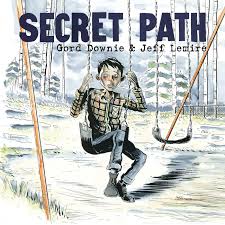Recommendation #2: Digital Storytelling using Secret Path
Digital Storytelling and FPPL
Digital storytelling can be described as the practice of using technological tools and multimedia to tell stories. Storytelling, in all its forms, can be an effective teaching method to motivate and engage students. It can improve student memory through reflection, interaction, and discussion (Hung, Hwang & Huang, 2012). It is a vital tool in creating valuable learning experiences for students. Transfer of knowledge through oral language and story is woven throughout the First People’s Principles of Learning. Core values such as connectedness, relationships, and respect for the environment evolve from the sharing of memories and stories (SetBC:Classroom Technologies and First Peoples Principles of Learning). Storytelling can be used to effectively bring to life many sensitive and controversial topics for students.
 Example: Secret Path and Residential Schools
Example: Secret Path and Residential Schools
Secret Path is a multi media project depicting the life of Chanie Wenjack, a boy from the Marten Falls First Nation who died in 1966 after escaping from an Indian Residential School and attempting to walk 600 kilometers back to his home. It includes a musical album, a graphic novel, and a documentary film. The graphic novel and music was written by the late Gord Downie from the Canadian rock band The Tragically Hip. The project has been used by many Canadian schools to teach Indigenous history lessons. Secret Path can be a powerful tool in telling the story of the indian residential school system in Canada.
The Secret Path documentary video to the left is comprised of several components. It portrays the journey of The Tragically Hip’s Gord Downie to visit the family of Chanie Wenjack. It then tells the complete story through the music of Gord Downie and the illustrations of Jeff Lemire. It concludes with a panel discussion on the project and the role that it plays in working towards reconciliation.
The Learning Bird Resource to the right includes useful activities that use the Secret Path multimedia project to explore storytelling in a variety of forms that can be used to express events and stories like those of Chanie Wenjack. This resource is not intended to offer in depth teaching of the Canadian residential school system but rather an introduction to this history.
It is comprised of the following lessons and activities:
- Brainstorming Activity – What are Stories?
- Learning Activity – The Ways to the Secret Path: Story Telling and Form
- Learning Activity – Listening to the Secret Path: Song Analysis
- Learning Activity – Reading the Secret Path: Graphic Novels
- Learning Activity – Writing about the Secret Path: Movie Review
- Learning Activity – Secret Path Language Activity: “The Stranger”
- Demonstration of Learning – Finding Your Own Secret Path: Story Telling and Self Expression
Which of the First People’s Principles of Learning are can be observed when using the Secret Path resources?:
- Learning ultimately supports the well-being of the self, the family, the community, the land, the spirits, and the ancestors
- Learning is holistic, reflexive, reflective, experiential, and relational (focused on connectedness, on reciprocal relationships, and a sense of place)
- Learning recognizes the role of indigenous knowledge
- Learning is embedded in memory, history, and story
- Learning involves generational roles and responsibilities
- Learning requires exploration of one’s identity
Possible Connections to Curricular Competencies and the BC Curriculum (Students will be able to):
- Assess the significance of people, places, events, or developments at particular times and places (Social Studies 7)
- Make ethical judgements about past events, decisions, or actions, and assess the limitations of drawing direct lessons from the past (ethical judgement) (Social Studies 7)
- Apply appropriate strategies to comprehend written, oral, and visual texts, guide inquiry, and extend thinking (ELA 7)
- Think critically, creatively, and reflexively to explore ideas within, between, and beyond texts (ELA 7)
- Recognize how language constructs personal, social, and cultural identity (ELA 7)
- Use and experiment with oral storytelling processes (ELA 7)
- Recognize and appreciate the role of story, narrative, and oral tradition in expressing First Peoples perspectives, values, beliefs, and points of view (ELA 7)
Useful Resources:
Use this website for background information and the history of the Secret Path project. The video includes a useful table of contents that will allow you to choose the section you wish to view. Included is a panel discussion about the project and its connection to reconciliation.
Indigenous Languages and Secret Path Educator Resources
This link will take you to another Learning Bird resource which emphasizes indigenous language revitalization through a variety of activities related to Secret Path. Activities focus on research, communication, empathy and literacy skills.
Secret Path Lyrics for Songs/Poems
Use this site to explore the lyrics of the poems/songs in Secret Path written by Gord Downie.
